In today’s fitness-oriented world, having strong and well-defined forearms is not only aesthetically pleasing but also beneficial for various activities. One exercise that specifically targets the forearm muscles is the Behind the Back Barbell Wrist Curl.
By regularly incorporating this exercise into your fitness routine, you can strengthen your forearms and enhance your grip strength.
What is Behind the Back Barbell Wrist Curl
The Behind the Back Barbell Wrist Curl exercise specifically targets the muscles of the forearms. It involves holding a barbell with an overhand grip behind your back, allowing your wrists to extend over the barbell.
By curling your wrists upwards and then lowering them back down, you effectively work the muscles in your forearms. This exercise primarily targets the flexor muscles, responsible for gripping and wrist movement.
Importance of Forearm Strength
Forearm strength plays a crucial role in many daily activities and sports. Whether you’re carrying groceries, playing tennis, or even typing on a keyboard, your forearm muscles are actively involved.
Having strong forearms allows you to perform these tasks with ease and reduces the risk of strain or injury. Moreover, well-developed forearms contribute to an overall balanced physique, enhancing your appearance.
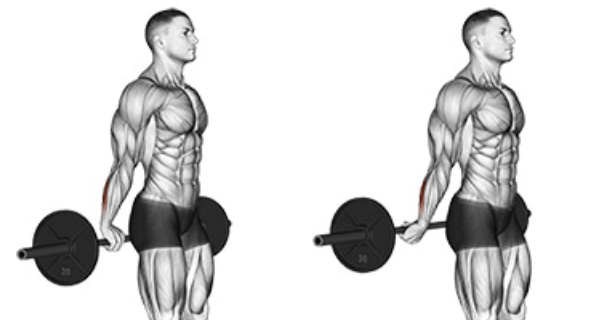
Anatomy and Muscles Worked
Understanding the Forearm Muscles
Our forearms are composed of a complex network of muscles that work together to facilitate wrist, finger, and forearm movements. There are two main teams of muscles: the flexor muscles and the extensor muscles.
The flexor muscles, located on the palm side of the forearm, enable wrist and finger flexion for gripping objects. Meanwhile, the extensor muscles, located on the back of the forearm, assist in wrist and finger extension.
Together, these muscles provide the necessary strength and coordination for various daily activities and exercises like the Behind the Back Barbell Wrist Curl.
Primary Muscles Targeted by the Behind the Back Barbell Wrist Curl
The Behind the Back Barbell Wrist Curl primarily targets the following forearm muscles:
- Wrist Flexors
- Flexor Digitorum Superficialis
- Flexor Digitorum Profundus
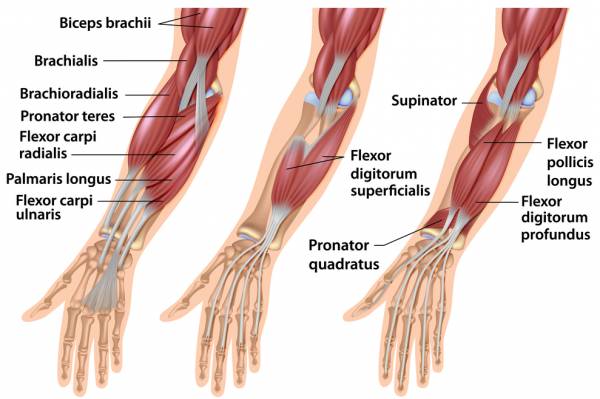
Proper Technique for Behind the back wrist curls
A. Set-Up and Equipment Needed
To perform the Behind the Back Barbell Wrist Curl, you’ll need the following equipment:
- A barbell with appropriate weight plates
- A squat rack or a stable surface to hold the barbell
Ensure that the barbell is loaded with a weight that suits your fitness level and allows for proper form and control.
B. Step-by-Step Guide to Performing the Behind the Back Barbell Wrist Curl
Here’s a detailed breakdown of how to execute the Behind the Back Barbell Wrist Curl correctly:
- Initial Position
- Stand upright with your feet shoulder-width apart.
- Extend your arms behind you and hold the barbell with an overhand grip, hands slightly wider than shoulder-width apart.
- Let the barbell rest on your glutes, just above your hips.
2. Execution of the Exercise:
- Keep your upper body stable and maintain a straight posture throughout the movement.
- Slowly lower the barbell by flexing your wrists, allowing it to roll down to your fingertips.
- Pause briefly at the bottom of the movement.
- Use your forearm muscles to curl the barbell back up, raising it as high as possible while maintaining control.
- Squeeze your forearms at the top of the movement to maximize muscle activation.
- Repeat for the desired number of repetitions.
C. Breathing Techniques and Tempo
When performing the Behind the Back Barbell Wrist Curl, it’s important to coordinate your breathing with the movement:
- Inhale deeply before starting the exercise.
- Exhale as you flex your wrists and lower the barbell.
- Inhale again at the bottom of the movement.
- Exhale as you curl the barbell back up, engaging your forearms.
- Maintain a controlled tempo throughout the exercise, emphasizing the mind-muscle connection and focusing on the targeted muscles.
Remember to maintain proper form, breathe consistently, and perform the exercise at a tempo that allows you to maintain control and get the most out of each repetition.
Benefits of Behind the Back Barbell Wrist Curl
The Behind the Back Barbell Wrist Curl offers a range of benefits that can greatly improve your forearm strength and grip. Here are the key advantages of incorporating this exercise into your routine
- Improved Grip Strength: The exercise specifically targets the muscles responsible for gripping, resulting in a significant enhancement in grip strength. This is especially beneficial for sports like rock climbing, golf, and martial arts.
- Enhanced Performance: Strong forearms directly contribute to better performance in various sports and fitness activities. Whether it’s swinging a golf club, throwing punches, or gripping sports equipment, increased forearm strength can elevate your performance.
- Injury Prevention: Strengthening the forearms helps stabilize the wrists and reduces the risk of strains and sprains. This is particularly important for tasks involving repetitive movements or activities that put strain on the wrists.
- Everyday Functional Benefits: Well-developed forearm muscles make everyday tasks easier and more efficient. From carrying heavy objects to opening jars, strong forearms have a practical impact on daily life.
By regularly incorporating the Behind the Back Barbell Wrist Curl into your workouts, you can experience these benefits and take your forearm strength and grip to new heights.
Variations of Behind the back barbell wrist curl
Dumbbell Behind the Back Wrist Curl
- Technique and Execution:
- Hold a dumbbell in each hand with an overhand grip.
- Stand upright with your feet shoulder-width apart.
- Extend your arms behind you, allowing the dumbbells to rest on your glutes.
- Flex your wrists, curling the dumbbells upward as high as possible while keeping control.
- Slowly lower the dumbbells back down to the starting position.
- Benefits and Targeted Muscles:
- The Dumbbell Behind the Back Wrist Curl primarily targets the forearm flexor muscles, strengthening your grip and forearm strength.
- This variation also engages the wrist extensor muscles, providing balanced development and stability.
Cable Behind the Back Wrist Curl
- Proper Form and Execution:
- Attach a straight bar or rope handle to a low pulley cable machine.
- Stand facing away from the machine with your feet shoulder-width apart.
- Grasp the bar or handle with an overhand grip.
- Keep your arms extended behind you and your wrists in a neutral position.
- Flex your wrists, curling the bar or handle upward against the resistance of the cable.
- Slowly return to the starting position, maintaining control throughout the movement.
- Advantages and Variations:
- The Cable Behind the Back Wrist Curl provides constant tension throughout the exercise, maximizing muscle activation and targeting the forearms effectively.
- You can use different attachments like a straight bar or rope handle to vary the grip and engage the muscles from different angles.
Tips to Maximize Results and Safety
To get the most out of your Behind the Back Barbell Wrist Curl while ensuring safety, consider these tips:
A. Warm-up and Stretching: Prioritize a warm-up and incorporate wrist and forearm stretches to prepare your muscles.
B. Progressive Overload: Gradually increase weight or repetitions to challenge your muscles and promote growth.
C. Proper Recovery: Allow ample rest and recovery time to avoid overuse injuries and promote muscle repair.
D. Listen to Your Body: Pay attention to any discomfort or fatigue and adjust your technique or weight accordingly.
E. Seek Professional Guidance: Consider working with a qualified fitness professional for personalized guidance.
By following these tips, you can optimize your results and maintain a safe workout routine.
Common Mistakes to Avoid
To get the most out of your Behind the Back Barbell Wrist Curl and prevent potential injuries, it’s essential to avoid these common mistakes:
A. Using Excessive Weight
- One common mistake is using too much weight, compromising your form and putting excessive strain on your wrists and forearms. Start with a weight that allows you to maintain proper form and gradually increase the load as your strength improves.
B. Incorrect Wrist Positioning
- Improper wrist positioning can diminish the effectiveness of the exercise and increase the risk of discomfort or injury. Make sure your wrists are in a neutral position throughout the movement, avoiding excessive flexion or extension.
C. Lack of Full Range of Motion
- Failing to perform the exercise through a full range of motion can limit its benefits. Avoid shortening the movement or stopping before reaching the fully extended or flexed position. Maintain control and strive for a complete range of motion with each repetition.
D. Neglecting Proper Breathing Technique
- Breathing plays a crucial role in maintaining stability and exerting effort during the exercise. Remember to coordinate your breathing by inhaling before starting the movement and exhaling during the exertion phase. Neglecting proper breathing technique can disrupt your rhythm and potentially compromise your form.
By being mindful of these common mistakes and focusing on proper form, you can maximize the benefits of the Behind the Back Barbell Wrist Curl, reduce the risk of injury, and achieve optimal results in forearm strength and grip enhancement.
Frequent Question Answers
By addressing the following frequently asked questions, we hope to provide clarity and guidance on incorporating the Behind the Back Barbell Wrist Curl into your fitness routine. Remember to listen to your body, start at an appropriate level, and gradually progress for optimal results.
| Question | Answer |
|---|---|
| What muscles does the Behind the Back Barbell Wrist Curl target? | This exercise primarily targets the forearm muscles, specifically the flexor muscles. |
| Can I do Behind the Back Barbell Wrist Curls at home? | Yes, as long as you have a barbell and enough space to safely perform the movement. |
| What equipment is needed for Behind the Back Barbell Wrist Curls? | The main equipment needed is a barbell. You might also want to use a weight belt for back support if you’re lifting heavy weights. |
| How can I modify the Behind the Back Barbell Wrist Curl if it’s too challenging? | You can lighten the weight or use a resistance band instead of a barbell. |
| What are some alternative exercises if I can’t do Behind the Back Barbell Wrist Curls? | Some alternatives include standard wrist curls, hammer curls, or reverse barbell curls. |
| How many sets and reps of Behind the Back Barbell Wrist Curls should I do? | This can vary depending on your fitness goals, but a common recommendation is 3 sets of 10-15 reps. |
| Is the Behind the Back Barbell Wrist Curl safe for beginners? | Yes, but it’s important to start with a light weight to ensure proper form before progressing to heavier weights. |
| Can I incorporate Behind the Back Barbell Wrist Curls into my regular workout routine? | Absolutely, these can be a great addition to any upper body or arm-focused workout routine. |
Conclusion
In conclusion, the Behind the Back Barbell Wrist Curl is a valuable exercise that can strengthen your forearms and enhance your grip. By incorporating this exercise into your fitness routine, you can enjoy the following benefits:
- Improved forearm muscular endurance
- Enhanced grip strength
- Injury prevention and rehabilitation
- Sport-specific applications
To maximize the benefits and ensure safety, remember the following key takeaways:
- Start with a weight that allows you to maintain proper form and gradually increase the load as your strength improves.
- Keep your wrists in a neutral position and perform the exercise through a full range of motion.
- Coordinate your breathing and listen to your body’s signals during the exercise.
- Prioritize a warm-up, incorporate progressive overload, and allow adequate recovery time.
- Consider seeking professional guidance for personalized instruction and program design.
By following these guidelines and incorporating the Behind the Back Barbell Wrist Curl into your fitness routine, you can strengthen your forearms, enhance your grip, and improve your overall performance in various activities. So, grab that barbell and get ready to take your forearm strength and grip to new heights!
Sources
- Behind-The-Back Barbell Wrist Curl by Jim Stoppani – YouTube
- How to Get Bigger Forearms? Try Behind the Back Wrist Curls by Dr. Jim Stoppani – YouTube
- Is wrist curl weight training pointless for building bigger forearms? – Quora
- Thoughts on bar behind back or in front of you? (for shrugs …) – Reddit
- How to Do Barbell Wrist Curl Behind the Back – StrengthLog
- Standing behind-the-back wrist curl – Bodybuilding.com
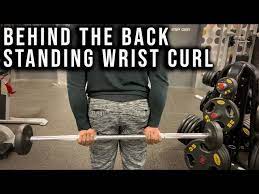


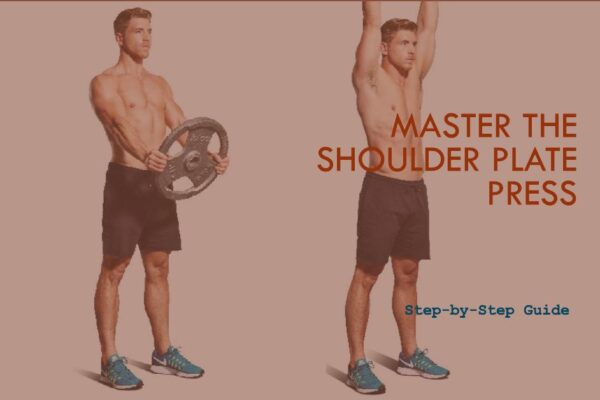
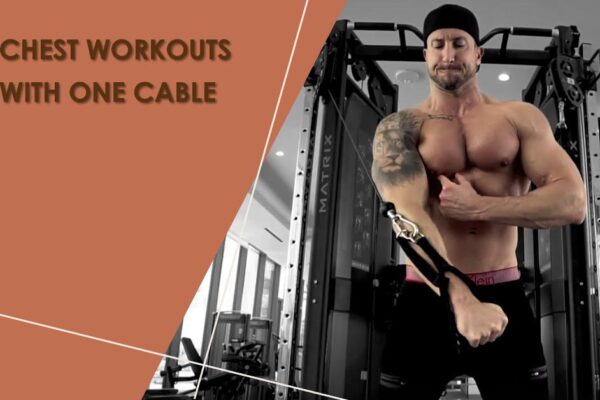

Leave a Reply